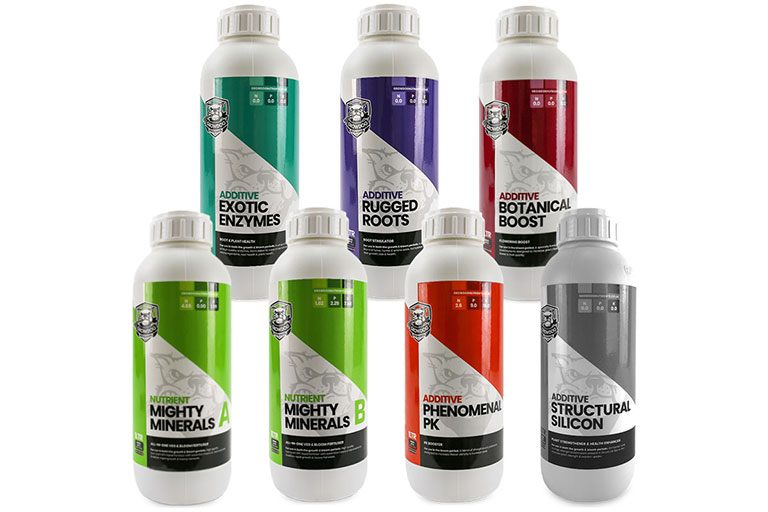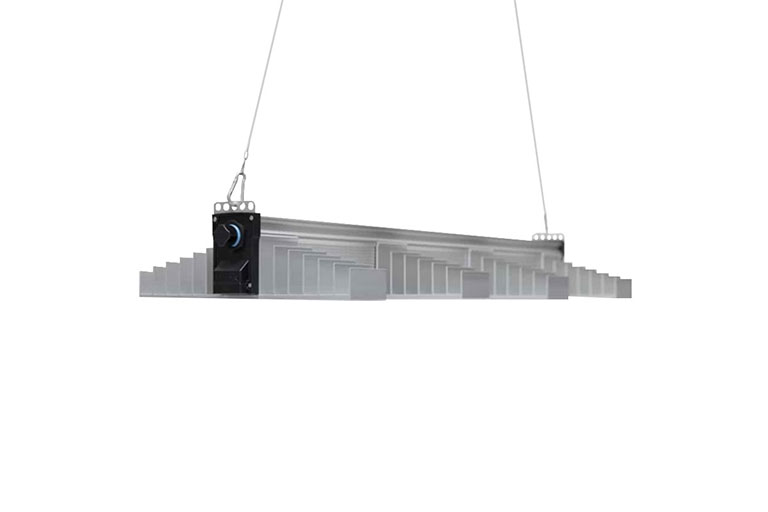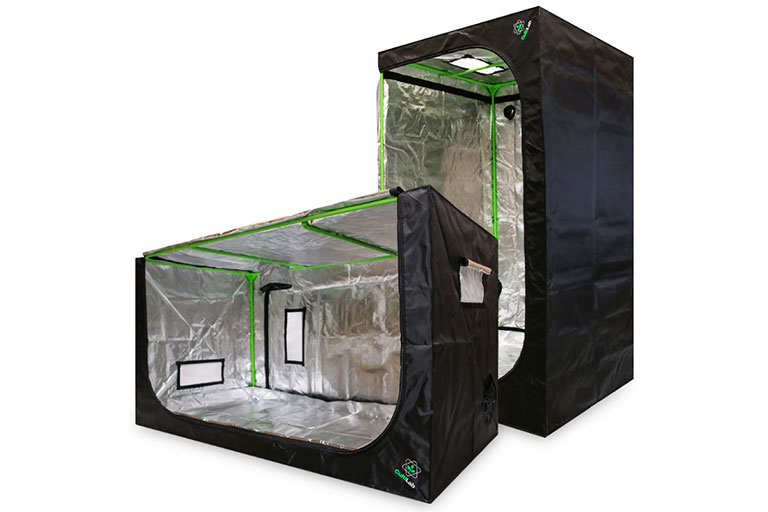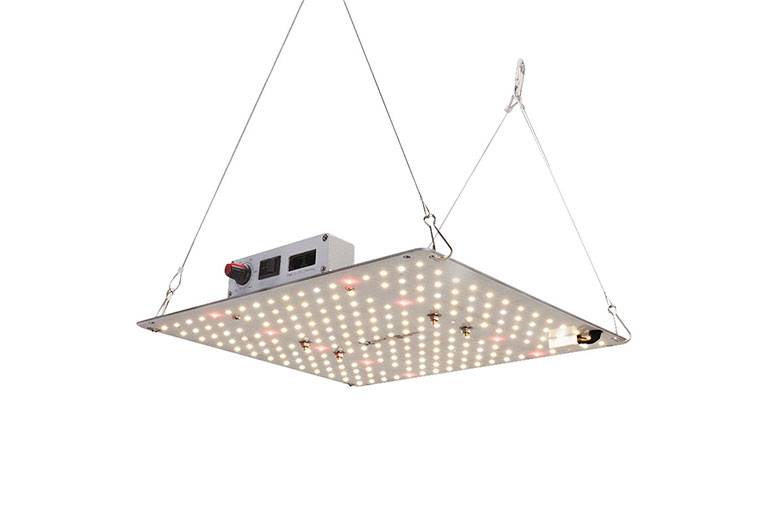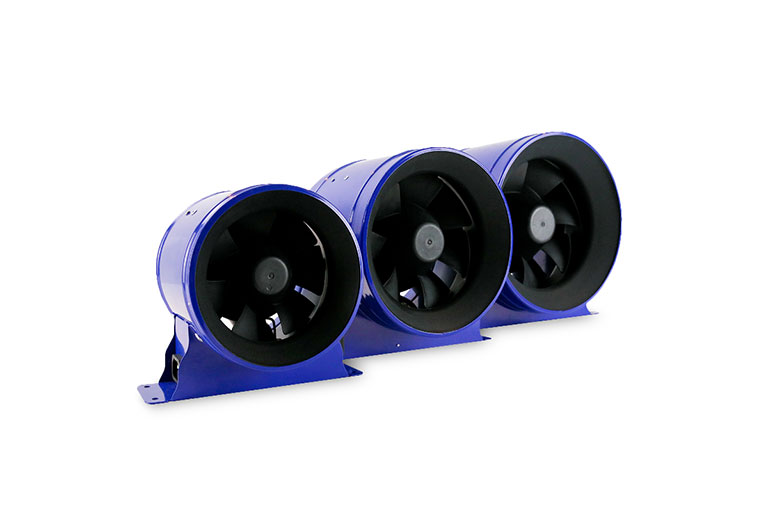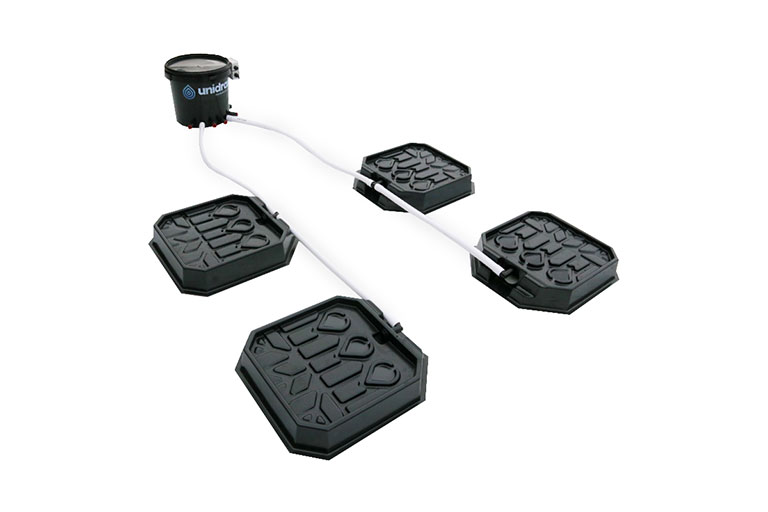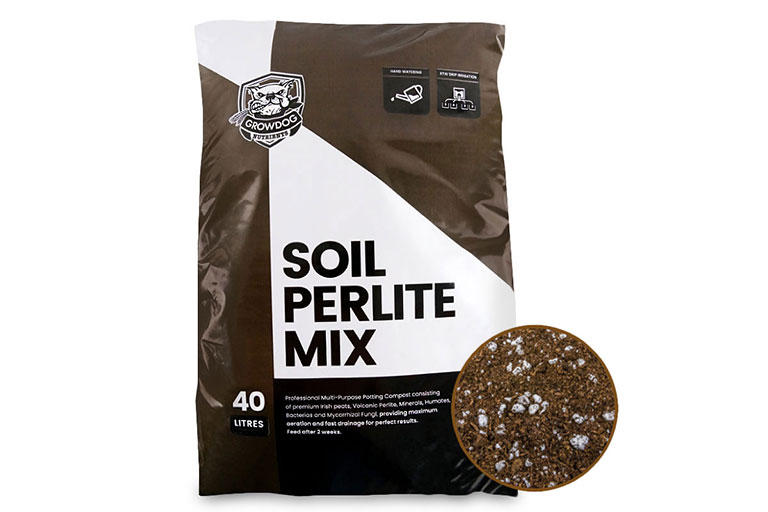8 Top Tips: Build The Ultimate Energy Saving Grow Tent
If you’re growing indoors right now, you’re likely looking at ways to make your next one an energy saving grow? This blog aims to set out some ideas for a low-power grow tent solution.
UK Energy Price Cap
The UK energy price cap’s been set at £2,500 in October 2022, and each UK household is set to receive a £400 rebate over the next six months. With this factored in, the average household (with average energy use) is set to pay 6.5% more on their energy bills than last year (2021).
We understand that grow lights and environmental control systems can be costly to run. And, that if you’re growing indoors, your energy use is likely much higher than average. With the tips we set out below, we’ll help you to save money on your energy bill versus doing nothing.
Choose Energy-Efficient Lights
One obvious point for your next energy saving grow, is to use energy efficient grow lights. Here is a breakdown of the average daily costs to run a variety of popular grows lights for an 18-hour veg period, and 12-hours flowering period.
Garden tip: Costs are calculated using the UK: Energy Price Guarantee (October 2022) electricity rate of 34.00 pence per kWh.
| Power Use per kWh | Cost Per 18 hrs (£) | Cost Per 12 hrs (£) |
|---|---|---|
| 1000W HID | 6.12 | 4.08 |
| 600W HID (MH/CMH) | 3.67 | 2.45 |
| 315W LED HID (CHM) | 1.93 | 1.29 |
| 300W LED | 1.84 | 1.22 |
| 250W CFL | 1.53 | 1.02 |
| 200W LED/CFL | 1.22 | 0.81 |
Garden tip: If you want a more detailed run down of the operating cost of indoor grow lights for grow tents, click the following link to read our blog post: How To Save Energy at Home – Grow Room Tips.
Average Rated Life for Different Bulb Types
The average rated life of a bulb is determined by testing a batch to see how long it takes for half of them to fail. The number given could represent that 100 bulbs were included in the test batch over a period of 1,000 hours, with half of them failing within that time. The most common average rated life for different plant growing related bulb types are:
- Incandescent – 750 to 2,000 hours
- Halogen – 2,000 to 4,000 hours
- Screw-in CFL – 8,000 to 10,000 hours
- HID – 10,000 to 24,000 hours
- Fluorescent – 24,000 to 36,000 hours
- LED – 40,000 to 50,000 hours
LED Energy Saving Grow Lights
If you want to run a low power, energy saving grow tent, you need to switch to LED grow lights. Units like Maxibright LED grow lights are, hands down, the quickest energy saving grow tent addition. They’re more efficient, and you can run lower wattage lights and still achieve the same PAR output as HID grow lights. LED grow lights cover a wider light spectrum, and the ability to dim with their additional energy efficiency means you can use them throughout the growth cycle of your plants.
Why are LED lights more energy efficient?
Lower-wattage LED grow lights provide the same light intensity as higher-wattage HID lights. This means you can use LEDs to lower your power use, save money, and still give your plants the same amount of light. Additionally, LEDs give off far less heat than HID grow lights. The fact LEDs don’t waste energy producing heat also reduces your energy use. Less heat in the grow room means you don’t have to run your ventilation and cooling equipment as hard.
Yield vs. power consumption in a low power grow tent
The light emitted by an LED grow light provides a better balance of red, blue and green light. The quality of this light closely mimics natural sunlight. LED grow lights give you the opportunity for higher yields by using less power.
What is the maximum light footprint of an LED grow light?
LEDs’ ability to produce higher amounts of P.A.R. per watt of energy consumed makes comparing LEDs’ wattages to other lighting systems’ wattages difficult. However, the recommendations for light coverage differ so much from manufacturer to manufacturer, that using wattage as a measurement base is often the best solution.
Higher wattage light fixtures will be positioned further apart from each other. So, for example, you can place two 400W LED grow light’s closer together than two 1000-watt LEDs. A higher-wattage LED system generally equates to a more extensive light footprint in a much larger area.
For a low power grow tent, try to have 30-40W of LED light per square foot (30 x 30 cm) of garden space. For example, a 400W LED happily covers a 1.2m2 area. Using this general rule makes it easier to determine how many fixtures you will need to get the maximum light footprint for your chosen size of grow room.
What is the optimum number of plants to grow under an LED?
The answer to this depends on what you are growing. If you’re growing small herbs or microgreens, you will fit many more in your grow room, and they will all have an abundance of light. If you are growing larger, fruit-bearing or flowering plants, you’ll be more limited.
Garden tip: To find the specific lighting requirements for your plant, conduct an online search. Here you’ll get the specific information you need to know.
If not, use the general rule of 30-40 watts of LED per square foot of grow room floor space, you should be able to work out how many of your chosen species you can house in your grow room. You can also reverse engineer things and use the watts per sq. foot to determine what size grow space you need and how many light fixtures you need to raise the number of plants required.
CMH Lights or MH lights?
If you can’t afford LED lights, then look at Ceramic Metal Halide or CMH lights. CMH lamps are more expensive than your average MH (metal halide) lights, but they do consume less energy.
CMH’s can produce more PAR light — the light used for photosynthesis — than average MH lights. A 315W CMH light, for example, will give you the same light intensity as a 600W MH light. CMH lights also run much cooler than MH lights, meaning less ventilation and extraction is required, lowering your energy bill.
Is your Insulation Effective?
Ensure your grow room is appropriately insulated so you are not losing or accumulating too much heat or humidity.
Check that the windows, doors, and vents in your grow room are insulated/sealed so that neither heat nor cold air is escaping or entering your grow room. Use good quality ducting, ensure it has no rips or gaps and is securely attached to your exhaust system with the appropriate clamps and fixings.
Check that the external environmental conditions aren’t affecting your grow room. Are you growing on a cold concrete floor, for example? Put a piece of carpet or material between the tent and the ground.
Airflow Efficiency
Good airflow is essential for the health of your plants, but using the wrong fan or too many fans is a mistake that can significantly increase energy consumption and electricity costs.
Choosing the Right Fans For LED Grow Lights
While it might seem more cost-effective to use cheap clip-on fans or desk fans, using these will raise your electric costs. Investing in an EC fan will initially cost you more, but it will be more cost-efficient in the long run.
AC and EC Fans – What’s the difference?
EC fans combine AC and DC voltages. EC fans cost more to buy, but the advantages of them versus AC fans, which use AC voltage alone, are:
- Cheaper to run
- Quieter running
- Help to produce better yields
- Offer better environmental control
Using a Fan Speed Controller
To save yourself unnecessary energy use, pair your EC fan with a fan speed controller. The speed controller works to adjust the fan’s speed according to the environmental conditions in your tent. Most controllers allow you to set the range on down to one degree increments for complete accuracy and perfection of your growing environment. For example, with an EC fan controller, your EC fan will use 50% less electricity at half speed. In contrast, AC fans use almost full power regardless of the rate you run them. The latest estimates suggest you can save on average £300 a year by picking an EC fan and controller over an AC fan.
8 Top Tips for the Ultimate Low Power Grow Room
If you are looking for the ultimate low power grow room set-up for up to 4-plants, then we have the solution for you. The next 8 top tips will combine to offer you the best in performance and energy savings. The following list will give you everything you need to get growing in an energy efficient way.
1. Grow Tent
The Cultilab 1 × 1 × 1.8 m grow tent comes complete with all poles, corner pieces, two waterproof catchment trays, a canvas outer, and oversized double ventilation ports to reduce light leaks.
2. Lights
You will need two Spectra G100 lights for your set-up. The 100W Omega Spectra G-line 100W PRO LED uses passive cooling, and consumes less energy while providing the same amount of light as HPS, making them more efficient. They also have a long lifespan of around 50,000 hours or more.
Run The Lights On Period At Night
A lot of nighttime tariffs are lower, which means you’ll pay less for the electricity you’re using. Tariffs like Economy 7 mean you pay less per Watt of energy used.
Fans usually work harder during ‘lights on’, and the cheaper, nighttime tariff means you’ll save money.
It’s typically colder at night, especially during the autumn/winter, so having the lights on at night makes it easier to keep your grow room temperature within tolerance.
Use A Digital Ballast Or LED Lights
If you use a HID grow light, some lights use more energy than others.
Magnetic Ballasts
Magnetic ballasts have a high start up current of around 3.5 to 4A for a 600W ballast. You only get 13A from a standard household supply. If you try to run three or more Magnetic ballasts at a time, you’ll trip a switch.
Digital Lights
Digital ballasts are more efficient than magnetic ballasts. They work differently, and slowly build up to a 3A output, preventing the large start-up surge. Even at full power, they use 3 – 4% less energy than a magnetic ballast. You can also dim digital ballasts, so you’re able to use them for propagation cycles.
LED Lights
LED lights are by far the cheapest to run. The lower heat output allows you to get the lights closer to the canopy, giving you more PPF and much larger yields than like-for-like HPS alternatives.
Anecdotal evidence indicates that, using the 34p per kW tariff, you could run 2x Telos 10 Pro Mesh LED grow lights at 50% and save money on energy use while massively gaining on final yields versus using a single 600W Magnetic HPS.
3. E.C. Fan
The Phresh Hyperfan V2 EC Fan is amongst the most reliable, durable and quietest extractor fan for your indoor grow room.
Unlike AC extractor fans, EC extraction fans use less energy the slower they run. Their EC motors improve efficiency and operate linearly, versus the demand put on them, for example, EC fans use half the power at half speed.
Garden tip: Don’t forget to include some suitable ducting and accessories, including something to attach it to your EC fan’s flange.
EC fans are one of the easiest energy saving tips to make. They’re unbelievably cheap to run, move more air than AC fans and use less power:
- AC fans draw the same amount of power regardless of the speed you run them at. Even if you slow them down to 1%.
- EC fans operate on a linear basis. They use less power at slower speeds for example, at 1% speed, they use approximately 1% power. At full speed, EC fans use less power to move more air than AC fans.
| Speed % | AC Fan | EC Fan |
|---|---|---|
| RVK 200 A1 | Phresh Hyperfan V2 200mm/8″ EC Fan | |
| At 100% speed | 104W | 95W |
| At 80% speed | 104W | 76W |
| At 50% speed | 104W | 48W |
| At 30% speed | 104W | 29W |
| At 10% speed | 104W | 9.5W |
4. E.C. Fan Controller
If you want an energy saving grow tent, you’ll want an EC fan controller to make sure you’re only running your fans as hard as you need to. The G.A.S. EC Fan Controller Thermostatically controls your intake and exhaust fans, reacting intelligently to changes in temperature. Your fans speed up or slow down depending on the environmental conditions in the room. Turning down the fan uses less power, so you’ll recoup your set-up costs over time.
Use a controller
You don’t want all your equipment running at full tilt, all the time. If you do, you’ll use much more power than you need to. This is where a suitable controller helps to keep an eye on your growing environment and manages it, to maintain a balance for you.
Controllers avoid issues like running your extraction at full speed all the time. This results in extracting more air than is needed, and can unnecessarily lead to your humidifiers & CO2 equipment running for longer and adding to your energy costs.
5. Carbon Filter
Team your E.C. fan with Assassin Carbon Filters (sized to suit). Assassin filters offer high-performance air-scrubbing and help to eliminate unwanted odours silently.
6. Pots and Low Power / No Power – Passive Feeding Systems
Give your next energy saving grow plants the best start in Air Pruner Fabric Pots. With a wide range of sizes, air pruning pots offer you better Drainage and vigorous aeration of the root zone. Root circling is eliminated, and yields are increased.
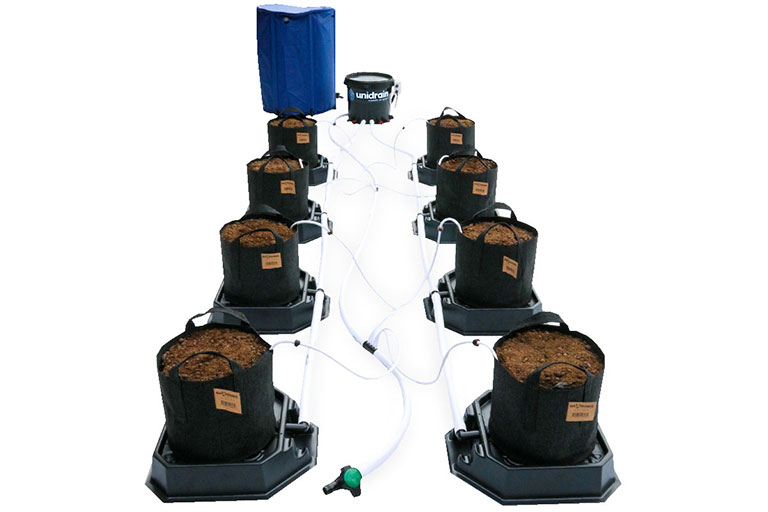
Energy saving grow equipment – low power / no power passive growing systems
Low power and no power, passive growing systems are great ways of saving money on energy use. Systems like unidrain can also wholly or partly automate your feeding and waste management regime. Using a passive system, like Autopots.
The biggest benefits of passive growing systems is:
- No noise of pump
- No power requirements to run them, so no need for spare power sockets
- Automatically maintains feed levels on one or more pots from a central reservoir
- Grow massive plants
Other low energy grow equipment includes the awesome unidrain drip and drain system. This system operates on a timer and a pair of low-power, high-pressure pumps to automate all your feeding and waste management routines.
We use unidrain systems in Opti-Climate rooms in our Chelmsford and Chigwell shops, and they consistently perform beyond expectations.
7. Substrate
Team your pots with the perfect grow media match. The Growdog Soil/Perlite Mix is the ideal organic mix of water retention, drainage, and aeration. The unique blend of organic and mineral nutrition encourages rapid growth. The beneficial microbes facilitate fast, strong root growth.
8. Nutrients to Feed
Compliment your next energy saving grow by using GrowDog Mighty Minerals Nutrients. GrowDog Mighty Minerals are a complete, professional A & B plant feed that contains all the essential nutrients required to achieve optimal growth. It’s really easy to use, mixes readily with reservoir water, and is suited to soil, coco, and hydroponic growing methods, as well as any automated or manual watering systems. Get the most out of your plants by using the full range of GrowDog nutrients and additive boosters.
